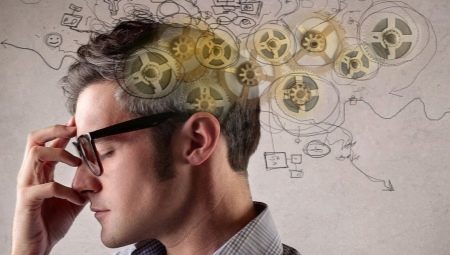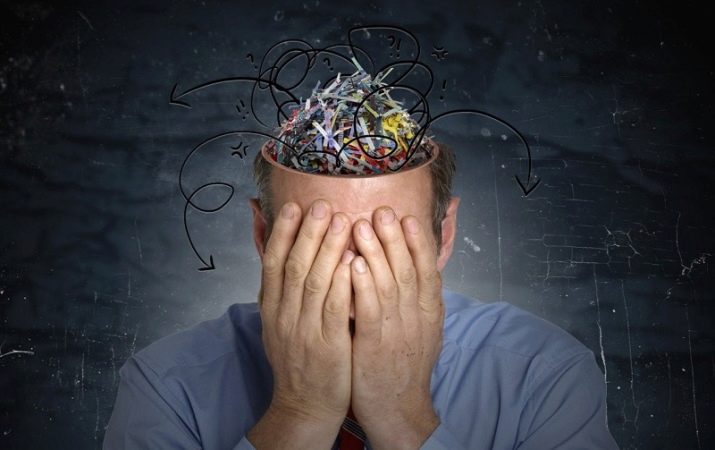Paralogical thinking: features, varieties and manifestation

A healthy brain, perceiving words and phrases, automatically translates them into a mental image. Failure to sort and correctly interpret incoming signals leads to distortion of reasoning, loss of logical connections, and delusions. It's about paralogical thinking.

What it is?
In psychology, paralogism (Greek paralogos - unreasonable, contrary to reason) refers to to thinking disorders, impaired cognitive function. Thinking activity with a similar pathology is characterized by defective judgment, a logic of narration that is strange to those around them and an erroneous analysis of the most common facts and events. Violation of the laws and rules of logic occurs unconsciously, unintentionally.
Paralogical thinking indicates a disorder of the mental process arising from mental disorders, due to which the logic of reasoning suffers... It can manifest itself in systematic delusions or overvalued ideas. This type of thinking is typical for people suffering from paranoia and schizophrenia. Patients strive to prove to everyone their exclusivity and righteousness.
People with paralogical thinking do not notice their logical mistakes, do not perceive alternative judgments of outsiders, ignore the objections of the interlocutors, since they are sure of the unwillingness of those around them to understand the real state of affairs. They proud, self-centered, touchy.
Outside of the paranoid structure, such individuals are able to think adequately.


The hallmarks of paralogical thinking are bias and "curvature" of reasoning, since any information contrary to the target presentation is excluded. Other facts and events are considered one-sided.If there is a conflict with the main idea, the information is deliberately distorted.
In the course of thinking, attention is drawn to individual events or random aspects of phenomena. For example, the loss of any thing is regarded as the fact of theft. Other reasons for the disappearance are not even considered. Sometimes a separate expression is snatched from the text, on which the falsity or truthfulness of a statement is built. The proof is an isolated phrase taken out of context.
Often a person who thinks paralogically comes to unexpected and strange conclusions... For example, while walking, the breath of a light breeze evokes the following reasoning: “A cold wind blows from the North Pole. He wants to destroy the universe, destroy all living things. Soon our land will be empty. "


Views
All 3 types of paralogisms identified by Aristotle can be observed in people with mental disabilities:
- incorrect reasoning due to the substitution of the thesis taken for the proof;
- misconceptions caused by the search for evidence;
- erroneous judgments underlying the evidence.
At the beginning of the twentieth century, psychiatrist E.A. Shevalov described varieties of paralogical thought processes.
- TO resonant type he attributed the desire to use stamped expressions, formulaic thoughts, ready-made formulas, stencils devoid of practical meaning. In their reflections, patients try to fit all the phenomena of everyday life into paralogical schemes. The judgments of the resonators are exaggerated and not devoid of pretentiousness.
- Symbolic view characterized by drawing an analogy between abstract concepts and concrete images replacing them. In psychiatry, a case is described with toasted bread that fell into the hands of a patient and served as a symbol of fire for him. The following chain was built in the patient's mind: burnt crust - fire - fire - suspicion of arson falls on him.
- Autistic type mental activity is manifested in the immersion of a person in the world of his own fantasies. They can be filled with deep philosophical content, various visual images. Often, people with this type of thinking are distinguished by external coldness, indifference and detachment from real life.
But the inner world amazes with its wealth, quirkiness and eccentricity.

How does it manifest?
Dissociation of thinking arises due to the weak connection between individual thoughts... The famous dancer Vaclav Nijinsky in his reasoning, pushing off from the round shape of the stage, smoothly passes to his own eye. He thinks something like this: “I don't like theaters with a square stage. I prefer a round theater that looks like an eye. I will build a theater with a round stage because I love looking at myself in the mirror. There I see only one single eye of mine in my forehead. "
In people with schizophrenia, impaired reasoning can be based on phonetic similarity of words... The associations that have arisen replace concepts due to the discontinuity of thinking. For example, having heard a phrase from a psychiatrist about alleged circular psychosis, the patient begins to prove to everyone that they want to kill him with a circular saw. The similarity of the sound of the words gives rise to strange argumentation, erroneous evidence. Reflections lead to the replacement of the definition, which has no connection with the original data.
Every error arises from reasoning that runs counter to normal logic. Sometimes a person uses phrases and expressions that do not correspond to the meaning and do not have any meaningfulness. Lack of judgment, ability to analyze, criticism interferes with the normal expression of thoughts. Logical errors that arise during reasoning are difficult to correct. For example, when asked what a mushroom picker should do when he is lost in the forest, the patient replies: “We must go not to the rear end, but to the front of the forest”.

Paralogous thought process thematic slipping is characteristic. A man suddenly during a conversation changes the topic of conversation... Often happens loss of thought. The individual begins to think that he has rested on the word and cannot get around it in any way.
During reading, you can also stop at any word that seems to have hypnotized the reader. This word is perceived by him in a new way. The patients themselves claim that in the end, it is not they who consume it, but the word that eats them.
Paralogical thinking often manifests itself in the loss of the ability to abstract... It is tested using proverbs and sayings. It is necessary to ask the patient to explain the meaning of some saying. For example, most patients interpret the persistent expression "throwing stones into someone else's garden" as follows: "you can break the windows in the house."
There are senseless arguments: "flowers are grown in the same place", "pebbles can destroy a home", "neighbors will be on the street in winter." Some people personify this saying: "Pebbles can break through a wall and people will see me."

Ambivalence is expressed in the inability to cope with the simultaneous presence of thoughts that are opposite in meaning. An individual with a duality of experience thinks something like this: "They want to kill me, and I love them very much." Patients claim that at this moment it seems to them as if their mind consists of many separate pieces. A person can leave the house, walk, then suddenly stop, turn left, return after a few steps and go right. An outside observer comes to the conclusion: the pedestrian's ability to make decisions is impaired.
Thoughtfulness of thinking is based on detailing, viscosity, getting stuck on individual details. The cough of a bystander is perceived by the patient as a kind of signal or warning message about something. There is delusional detailing, in which the selection of details depends on the content of the delusion. A wife with an obsession with her husband's infidelity arises in the imagination of the smallest details of the intimate relationship of lovers.
Paralogical thinking can be accompanied by speech stereotypes and perseverations. Repeated repetition of the same words, phrases is associated with getting stuck on some phenomena.
Patients tell different stories, anecdotes several times in a row, like a worn-out gramophone record.









